From the Top
Environmental Industry Associations CEO Sharon Kneiss talks candidly about the active evolution of the organization she took the reins of a year ago along with her assessment of the industry it serves.
Waste Age: The association is moving toward a name change. How important is that for the organization going forward?
Kneiss: I’ve learned this first-hand in joining this organization, it represents an industry that has had an tremendous impact on citizens’ quality of life, yet in many cases that’s unrecognized. We want to trumpet the great things the industry does, and part of that is building one strong brand.
Waste Age: Has the process so far been more difficult than you expected?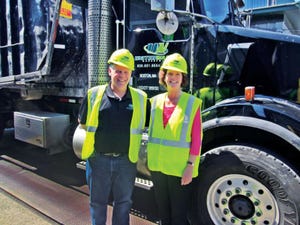 Kneiss: Let me give you a little perspective. This association has been in place for a very long time and has many loyal and dedicated members. And change is difficult for any organization and takes time to work through. This association though is blessed with a dedicated and active board that’s working very closely with us. And there’s other leaders in this industry who are working very closely with us. We all recognize that the key is to take the time to work through the options with the members to ensure they’re invested in the process and agree with the objectives, and also to take the time to get it right rather than do it fast.
Kneiss: Let me give you a little perspective. This association has been in place for a very long time and has many loyal and dedicated members. And change is difficult for any organization and takes time to work through. This association though is blessed with a dedicated and active board that’s working very closely with us. And there’s other leaders in this industry who are working very closely with us. We all recognize that the key is to take the time to work through the options with the members to ensure they’re invested in the process and agree with the objectives, and also to take the time to get it right rather than do it fast.
So while we have a timeline for moving forward and determining the brand, we want to ensure that the process allows proper review and approval before moving forward. Which means we need to be smart in how we time the introduction. So we want to get it right before we get it out fast.
Waste Age: Do you feel the timetable has changed at all, or is it still too early to tell?
Kneiss: I would say that we have put more opportunities to vet into the timeframe, so we’ve expanded the timeframe.
Waste Age: The association is moving toward restructuring its operations and focusing on four areas. Membership appears to be an area of emphasis. How do you see the association approaching that differently?
Kneiss: Our focus includes establishing this association as the premier association for this industry and strengthening the value proposition; that’s a key aspect. Leveraging the transition we’re in as an industry – and we are an industry in transition – increasing membership and, importantly, strengthening revenue opportunities. In sum, and this is our vision, we want to become the most effective and trusted voice for all things waste and recycling. I think we’ve put a strong plan in place to get us there.
Waste Age: You mentioned increasing revenue – do you have any specifics at this point?
Kneiss: As we’re putting our certification program in place we think there will be some revenue opportunities. Improving the promotion of some of the savings programs we offer; we offer very strong savings programs. We need to promote those more effectively. Building membership – I think there is a tremendous universe out there of opportunities of potential members who should be participating in this association, because they can value greatly from their participation.
Organizational Changes
Waste Age: You’ve indicated that government affairs and chapter operations will be enhanced. What types of changes do you see?
Kneiss: David Biderman is now heading up the government affairs and chapter operations group, which means there are additional resources there. Our regional managers remain in place; Chaz Miller continues to work with David. And David’s now reviewing operations to look for opportunities to enhance the work we are doing there. We’re going to have a three-person membership recruitment staff. We already have two of them in place (the membership recruitment and business development director and the membership coordinator). There are plans for us to also hire a membership manager, who will report to the membership recruitment and business development director. Both of these staffers will be working closely with David, and they’re going to be very active at the chapter level. The chapter level is a key focus; that’s where we mostly engage members. We are reviewing opportunities to share best practices within the chapters and to consider synergies between the chapters. And we’re looking for opportunities to be more visible and active at the federal level.
Waste Age: Does that involve lobbying, or other areas?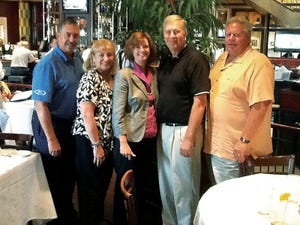
Kneiss: Yes (lobbying), and in the regulatory arena as well. And keep in mind that a lot of the organization changes we’ve made like the addition of programs have been made to enhance the services we offer not only to the membership at large but also at the chapter level – safety, certification, standards and statistics, education.
Waste Age: You mentioned safety. You just hired a new safety director, and when you talked about that you mentioned opportunities to broaden the program. Can you elaborate?
Kneiss: We’ve just hired Phil Hagan, who has an extensive background in safety – not only facility safety but also safety education. He has taught courses at Georgetown University, and we’re real excited to have him on board. He’ll be putting a plan together probably by mid-year on how we’re going to expand that. He’ll be working closely with the certification person we bring on because we want to develop a certification program that’s focused on safety; that’s going to be very important.
We’re going to be looking at what programs we can offer to the membership. We’re going to do our homework first. And Phil necessarily will be working with the safety committee. We want to be a much more member-led organization so we want to make sure that we have strong input from the safety professionals in this organization and in the industry as we move forward with our plan. We anticipate more education programs, broader reach in the education programs and more venues for the education programs — online and the like.
Waste Age: You have been president and CEO of the association since June 1. What has surprised you the most about the job?
Kneiss: It’s not a surprise, but I want to say what has impressed me the most is the membership has been, I’m telling you, so warm and welcoming, and willing to share their insights and historical perspectives. I have a board that’s extremely engaged, supportive and committed to the implementation of the new strategic plan, and is really taking the association to new levels. The board’s participation and support has been amazing, and that has made a big difference for all staff as we move forward.
Waste Age: Have there been things that have been more challenging than you expected?
Kneiss: We’re making a lot of changes. And we need to make sure as we’re making these changes we’re working very closely with the members, we’re hearing what they have to say and we’re making adjustments as we need to. The bottom line here is we want this to be an association that represents the membership. And so we’re being very careful as we move along in these changes to vet them within the membership and to encourage broad participation in the plan among the membership.
Ears to the Ground
Waste Age: After you took office you 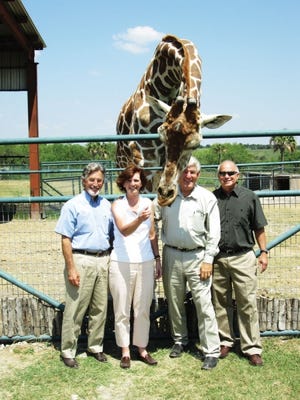 went on a “listening tour” for 100 days to meet members and learn about the industry. What were the most striking points you learned from that tour?
went on a “listening tour” for 100 days to meet members and learn about the industry. What were the most striking points you learned from that tour?
Kneiss: I say this everywhere I go: The first thing is the passion and commitment of the people in this industry. It really is inspiring. The history of how the industry started, with the fathers and grandfathers taking on jobs that were backbreaking, but they capitalized on opportunities, they built their businesses, and the current leadership of those organizations have tremendous pride in that history. And we need to consider how we can provide services to the next generation who will take over.
I’m also impressed with the level of technology advances in the industry; the highly engineered landfills, the technology attached to single-stream recycling, the advances in optical scanning and stereovision systems and things like that. The conversion to CNG (compressed natural gas) trucks; the technology and advancements attached to automated side loaders and advances in how trash is actually collected; and the level of contribution from this industry to the energy infrastructure in so many different ways. And then finally, and this is a very important thing I’ve learned, is the need to stay connected with the membership and to get out and learn from the members on a continuing basis.
Waste Age: Did anything surprise you particularly about your tour?
Kneiss: There is tremendous diversity in this industry. I found a lot of things surprising that really impressed me. I guess a surprise was on the energy side, the contribution to the energy infrastructure that this industry offers. I guess there is one other thing: How members of this industry, when they are managing waste they really look at it as resource they can extract value from, and there are many different ways to extract value. And I have learned that members of this industry are very creative in extracting value, creating markets and addressing the process of waste.
Waste Age: You mentioned in the past that you see value for the association developing strategic partnerships. Do you have a specific approach in mind for the types of partnerships, or will it vary with the opportunity?
Kneiss: It’s going to vary with the opportunity. We have a lot on our plate right now, and we’re considering possibilities as we continue to implement the strategic plan. We will look for strategic partnerships consistent with our strategic plan. Right now we’re considering several, but we’re very early in that process. One thing I can say is we are looking at a closer working relationship with EREF (the Environmental Research and Education Foundation).
Waste Age: Can you say in what form?
Kneiss: We’re working through that now, but Bryan (EREF president and CEO Bryan Staley) and I have had several discussions, and there are real opportunities for synergy between EIA and EREF.
Top Priorities
Waste Age: Has your priority so far been developing the association’s internal structure and plan, more than approaching industry issues and programs? How do you see that evolving?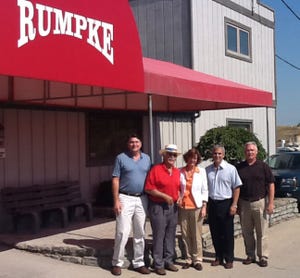 Kneiss: Part of the strategic plan is to build programs and to build greater value for the membership. And we’re moving ahead smartly on that right now. The new safety director is in place. The new manager of standards and statistics (joined shortly after). We’re hoping to have a certification director on staff soon. We’re seeking a technology director, and that person will address recycling, disposal, composting and related technical issues, and participate in the regulatory arena to address those issues. And we are beginning to think about how we enhance our education efforts.
Kneiss: Part of the strategic plan is to build programs and to build greater value for the membership. And we’re moving ahead smartly on that right now. The new safety director is in place. The new manager of standards and statistics (joined shortly after). We’re hoping to have a certification director on staff soon. We’re seeking a technology director, and that person will address recycling, disposal, composting and related technical issues, and participate in the regulatory arena to address those issues. And we are beginning to think about how we enhance our education efforts.
It’s an exciting time to be a member of this association as we work to build those programs. But we’re very much in the building stages on the programmatic side. Let me also say that certification is going to be a focal point as we begin to build in the area of driver safety. And then we’ll move to other programs. But certification we believe and our members believe will add significant value for the membership.
Waste Age: What is your sense now of how the industry is evolving, from what was primarily a waste collection and disposal business?
Kneiss: As I was joining the industry members continually told me that this is an industry in transition. I have seen that first hand. Recycling continues to gain in interest and importance. Recycling rates continue to increase. In 2010 the recycling rate was 34 percent of municipal solid waste (MSW). And we know now, although there’s not firm data, there’s somewhere between 58 and 74 percent of the population that have access to curbside recycling. Consider that a decade or two ago about 500 communities had access and today the number is somewhere between 9,000 and 10,000 communities that have access. That’s a tremendous boost in recycling.
Since the turn of the century all of the increase in waste generation has been taken by recycling. Composting technology continues to evolve, there are new frontiers in the types of waste we recycle, lots of work being done in food waste recycling, lots of work being done on electronics recycling. The advancements in technology have been so rapid that yearly some facilities add some of that technology just to keep up. Now, the other side of that is that recycling is still a commodity business, impacted by the rise and fall of commodity prices.
Waste Age: Some of the biggest companies have been hurt by that in their latest financial results.
Kneiss: It’s been a challenge with the downturn in the economy. I’m told that we’re starting in 2013 to see those commodity prices come back.
Waste Age: What are some of the other big challenges you see the industry facing at this point?
Kneiss: I’m told there’s still a lot of competition out there. At the chapter level there still are some challenges in the regulatory arena. With many challenges there are still many opportunities. Some of the challenges are related to the downturn in the economy, quite frankly.
Going to Law School
Waste Age: You mentioned earlier about more of an effort with federal legislation and regulation. Do have specific targets, or are you looking at it more generally?
Kneiss: At this point it’s a general view. I want David to get on his feet on the issues, work with the government affairs committee and determine what issues we should be plugging into. And where there are opportunities to work effectively at the regulatory level as well.
Waste Age: As you mentioned earlier, energy has become an increasing area of interest for the waste and recycling industry, from Waste Connections’ purchase of (oil field waste disposal company) R360 to growing efforts in landfill gas to energy, CNG trucks and waste conversion exploration. How do you see energy management overall fitting with the industry’s future?
Kneiss: I think its an important part of this industry’s future; both generation and use will continue to be an important aspect. Landfill gas generation we’re seeing at about 600 facilities. There’s an opportunity, according to the data, for generation at another 550 facilities. And these facilities exist in 47 of 50 states. Current production is around 1,800 megawatts of electricity and over 300 million metric cubic feet per day for direct use. So that’s not insubstantial.
On the fleet side conversion to CNG is continuing and advancing. Our industry is leading the way in fleet conversion. Right now I’m told the number is between 4,000 and 5,000 trash trucks that are CNG fueled and on the road. Manufacturers tell us that somewhere between 30 and 40 percent of the trucks they are putting out today are CNG fueled, and some estimates suggest that by 2016 that will be about 50 percent of what’s being manufactured. That’s very exciting.
And of course there’s been an explosion in the activity on fracking, which of course produces some waste from those operations, and that is an opportunity for the industry in oil field waste disposal. And companies like Waste Management are looking at exciting new technologies like converting trash to synthetic fuel and to chemicals. That’s definitely a frontier for the industry.
Waste Age: Do you see the public perception — and within the waste industry itself — of the industry being more engaged in environmental management than simply people that pick up the garbage? Do you see that perception changing?
Kneiss: I think that in the general public we can have a real impact on changing that perception. And that’s part of our strategic plan and our communication plan going forward is to really accelerate that perception.
Waste Age: Where do you hope the association will be a year from now and five years from now?
Kneiss: A year from now we’ll 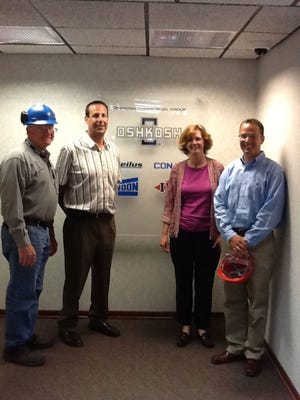 be well on our way to implementing our strategic plan. We’ll have programs in place. We hope to have a good firm start on the certification program. We will have a solid program developed for expanding our safety efforts. We will have a strong start to our membership recruiting and retention program. Because we’ve expanded the membership efforts here, and there’s going to be a lot more work directly with the chapters where we interact the most with our membership and where a lot of members see value. So there’ll be a lot more interaction between the chapters and our membership recruitment efforts.
be well on our way to implementing our strategic plan. We’ll have programs in place. We hope to have a good firm start on the certification program. We will have a solid program developed for expanding our safety efforts. We will have a strong start to our membership recruiting and retention program. Because we’ve expanded the membership efforts here, and there’s going to be a lot more work directly with the chapters where we interact the most with our membership and where a lot of members see value. So there’ll be a lot more interaction between the chapters and our membership recruitment efforts.
I think we’ll still be an association in transition. But by five years I think we’ll be recognized as the most respected and effective voice on all things waste and recycling.
Waste Age: How about those yardsticks with the industry?
Kneiss: Five years from now, there’ll be additional advancements in recycling. As I mentioned before, I think organics are the new frontier. I think there’ll be continued improvements in how to handle organics. I think recycling has become a cultural norm, so it’s a continuing effort to look for opportunities to recycle. There’ll be continuing technology advancements; we’re seeing that. Beyond that, it’s hard to speculate.
Waste Age: What about farther down the road – 10 years, 20 years from now?
Kneiss: That one’s hard to address. It’s mind-boggling the advancements in technology. I can’t even begin to anticipate what it’s going to look like 10 years from now. Or 20. We will continue to be active in the energy area. How that will expand – and I anticipate that will expand – we’ll continue to be active in this continuing-to-accelerate recycling area, and we’ll continue to offer very strong engineering solutions on the disposal side.
Waste Age: Any final thoughts? Anything more about the restructuring?
Kneiss: It’s really to elevate the association, to increase member value – and the members have been clear that they want to see an increased value proposition – and to enhance the efforts at the chapter level, which is so important to us. It’s all focused on bringing greater value to the members and, importantly, building the image of the industry with the broader population.
About the Author
You May Also Like


.png?width=300&auto=webp&quality=80&disable=upscale)